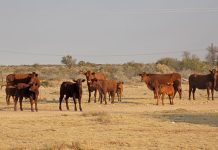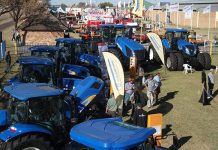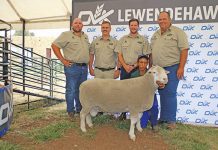For years organic farmer and activist Koos Pretorius has battled mining degradation on the Mpumalanga Highveld. Chairing the Escarpment Environment Protection Group which tries to protect sensitive catchment areas, Koos has experienced coal miners’ unaccountability first hand on his farm and says it is because they’re too close to politicians.
Mining has always received preferential treatment from the South African government, since the time of the Boer republics. It was seen as a cash cow that could finance government’s fiscal plans. Mining houses were experts in aligning their own interests with government’s, making them a “partner in crime” rather than a regulating authority. This continues to this day. A simple example is the fact that mining waste is still not defined, but rather classified, as a potential future source of minerals. This means it isn’t regulated as waste, but as an economic activity which generates waste.
The BEE incentive and the use-it-or-lose-it principle have also been major factors in weakening the state’s regulatory role. The big companies kept the major reserves and put BEE companies onto marginal ones, setting up companies to finance them. This means the reserves stay on the balance sheet as shares in the new companies.The big companies are almost always the buyers of the coal, especially export coal. According to the use-it-or-lose-it principle, if the coal isn’t mined they’ll lose the reserve, but they’d have lost it anyway.
Their BEE companies then mine the very marginal coal in highly sensitive areas on their behalf so they won’t be liable for the damage and pollution, while they meet their BEE requirements and buy up the coal anyway. Only 4% of the country’s reserves lie in sensitive areas.
So big companies let their BEE subsidiaries mine there while they keep to bigger deposits like in the Middleburg and Witbank areas, where sociopolitical impacts are less than on the escarpment and where the economy is more robust. Mpumalanga has only about 2% of land surface that’s very fertile, about 120 000ha or 1/15 of the Kruger National Park. Much of this land has coal reserves. After these areas are mined and the soil is put back, the land has production potential of about a 1/30 of what it had before. Where you had three animals per hectare, now you have about one on 10ha.
About 40% of land claims gazetted which haven’t yet been dealt with are under mining license application. The mining company get rights to mine the area for a while and destroys the surface. The socioeconomic impacts are severe. Most claimants I’ve spoken to said they don’t want money for their land but would like to farm it. The mine leaves nothing behind for the community to stay economically viable. On my farm, I employ 23 permanent staff and 60 more seasonal. If they mine my farm with 40 to 50 workers for about five years, it’s all gone.
As a result of the use-it-or-lose-it principle the conflict is seen as a white farmers versus black miners. Every time we object, it’s seen as white farmers who don’t want to help with BEE. If mining was good for South Africa in the long term, why are all the areas where it’s taken place so socioeconomically devastated? Mining companies claim they can rehabilitate mined areas, but they’ve yet to show where they’ve done so successfully.
When BEE companies get mining rights, they hire contract workers from outside the area because they have no time to train locals. Only about 10% of their labour comes from the local community. The company is there for three to four years, then leaves.
The social labour plan supposed to serve the local community is negotiated by the mining company and the municipality in a smoke-filled backroom. The community is never consulted.
A major coal mining company mines in Breyten, but started a road-tarring project in Amsterdam, about 100km away, as part of their social development plan. How does that benefit the Breyten community? The problem is if they fix the roads where their trucks drive in Breyten, they’ll be morally obliged to fix the majority of the roads in the area, where they’re mostly responsible for the damage.
If sustainability measures are correctly applied, what’s left behind could still be economically viable. The same with water and the environment. Although this could be very difficult, it’s possible. The problem is, the cost of re-establishing and rehabilitating is more than the value of the coal. Bottom line, they don’t want to lose money. – Peter Mashala
Contact the Escarpment Environment Protection Group on 083 986 4400. |fw








